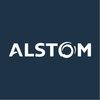


i
AECOM
Work with us
![]()
Proud winner of ABECA 2025 - AmbitionBox Employee Choice Awards
Filter interviews by
AECOM Interview Questions and Answers
76 Interview questions
Designing a ceiling involves aesthetics, acoustics, materials, and functionality to enhance space and user experience.
Aesthetics: Choose colors and textures that complement the overall design theme, e.g., coffered ceilings for elegance.
Acoustics: Consider sound absorption materials to reduce noise, such as acoustic tiles in concert halls.
Materials: Select durable and appropriate materials, like gypsum board for re...
Communicate proactively, assess the situation, and propose solutions to manage expectations and ensure project success.
Assess the reasons for the delay: Identify if it's due to resource constraints, technical challenges, or scope changes.
Communicate early: Inform stakeholders as soon as it's clear the deadline won't be met, providing context and potential impacts.
Propose alternatives: Suggest revised timelines or ...
Concrete should ideally be poured at temperatures above 50°F (10°C) to ensure proper curing and strength development.
The minimum temperature for pouring concrete is generally 50°F (10°C).
At temperatures below 40°F (4°C), special precautions are needed to prevent freezing.
Using insulating blankets or heated enclosures can help maintain temperature.
In cold weather, additives like accelerators can be used to speed up...
Rocks are classified into three main types: igneous, sedimentary, and metamorphic, each formed through different geological processes.
Igneous rocks: Formed from cooled magma or lava. Example: Granite, Basalt.
Sedimentary rocks: Formed from the accumulation of sediment. Example: Sandstone, Limestone.
Metamorphic rocks: Formed from existing rocks altered by heat and pressure. Example: Schist, Marble.
Rock bolts are essential for stabilizing rock masses in tunneling and mining, with various types suited for different applications.
1. Mechanical Rock Bolts: Used for immediate support in unstable rock conditions; examples include expansion bolts.
2. Grouted Rock Bolts: Provide long-term support by bonding with the rock; commonly used in underground mines.
3. Self-Drilling Anchors: Ideal for weak or fractured rock; t...
NATM focuses on utilizing the surrounding rock for support, while the Conventional Method relies on pre-defined structures.
NATM uses the ground's natural strength, allowing for flexible design adjustments during excavation.
Conventional Method often employs rigid support systems like steel ribs and shotcrete from the start.
NATM is more adaptable to varying geological conditions, making it suitable for complex terra...
Retention time for concrete refers to the duration it takes for concrete to achieve its desired strength and durability.
Concrete typically reaches about 70% of its strength in 7 days.
Full curing can take up to 28 days for most concrete mixes.
Factors affecting retention time include temperature, humidity, and mix design.
For example, high temperatures can accelerate curing, while low temperatures can delay it.
Proper...
A rock bolt pull-out test evaluates the anchorage strength of rock bolts in underground structures.
Measures the bond strength between the rock and the bolt.
Involves applying a tensile load to the bolt until failure occurs.
Used to assess the effectiveness of rock support systems.
Example: Testing rock bolts in a tunnel to ensure stability.
Results help in designing safe and effective support systems.
RMR stands for Rock Mass Rating, a system for classifying rock masses based on their geomechanical properties.
RMR is used to assess the stability of rock masses in tunneling and mining.
It considers factors like uniaxial compressive strength, rock quality, and groundwater conditions.
For example, a high RMR value indicates good rock conditions, while a low value suggests potential instability.
RMR values typically ra...
Shotcreting is a method of applying concrete through a nozzle to provide structural support and surface protection in tunnels.
Provides immediate support to tunnel walls and ceilings, preventing collapses.
Used to stabilize loose soil or rock surfaces, enhancing safety during excavation.
Can be applied in various forms, such as dry-mix or wet-mix shotcrete, depending on project requirements.
Commonly used in undergrou...
AECOM Interview Experiences
128 interviews found
- Q1. Can you describe your experience in past projects?
- Q2. What is your understanding of techno-managerial capability?
- Q3. What are your salary expectations?
Interview Preparation Tips
I appeared for an interview in Dec 2024, where I was asked the following questions.
- Q1. I am Om Prakash
- Q2. Quality control job
- Q3. QA QC Engineer jobs
- Q4. 𝐊𝐞𝐲 𝐃𝐨𝐜𝐮𝐦𝐞𝐧𝐭𝐬 𝐏𝐫𝐞𝐩𝐚𝐫𝐞𝐝 𝐛𝐲 𝐐𝐀/𝐐𝐂 𝐄𝐧𝐠𝐢𝐧𝐞𝐞𝐫/𝐈𝐧𝐬𝐩𝐞𝐜𝐭𝐨𝐫𝐬 📄 1. Inspection & Test Plan (ITP) Describes the sequence of inspections and tests Defines hold points, witne...
- Q5. .Job highlights . All QC Laboratory document preparation like work procedures,ITP,QAP,Checklist,formats required for carrying out project specific activity and testing as per project specifications and cod...
Interview Preparation Tips
I applied via Company Website and was interviewed in Oct 2024. There were 2 interview rounds.
Regarding RDSS Projects
(3 Questions)
- Q1. Regarding BOQ of 11 KV & 33 KV Feeder Bifurcation
- Q2. Regarding Installation of DTR Structure with transformer
- Q3. Regarding 33/11 KV Augmented substation and installation of Power Transformer
I appeared for an interview in Mar 2025, where I was asked the following questions.
- Q1. Electrical work is knowledge
- Q2. Cable tray laying work
- Ans.
Cable tray laying involves planning, installation, and securing cable trays for efficient cable management in electrical systems.
Assess the layout: Determine the optimal route for cable trays considering building structure and electrical load requirements.
Select appropriate materials: Use materials like aluminum or steel based on environmental conditions and load capacity.
Ensure proper support: Install trays with adequ...
- Q3. All types of cables termination and laying
- Ans.
Cables require proper termination and laying techniques for effective electrical performance and safety.
Types of cable terminations include crimping, soldering, and using connectors.
Cable laying methods include direct burial, conduit installation, and aerial installation.
For example, underground cables are often terminated with heat-shrinkable sleeves.
Aerial cables are typically laid using support structures like poles...
- Q4. Dependence on the all load calculation
- Ans.
Load calculation is crucial for ensuring electrical systems can handle demand without failure.
Load calculation determines the total electrical demand of a system.
It considers various factors like lighting, HVAC, and equipment loads.
Example: In a residential building, lighting load might be calculated based on wattage per square foot.
Commercial buildings may require demand factors for peak load scenarios.
Accurate load c...
- Q5. Earth fault calculation
- Q6. Project executions work client discussion solved problem
- Q7. BOQ is preparing to bill
Interview Preparation Tips
(2 Questions)
- Q1. In Which field do you have knowledge of?
- Ans.
I have knowledge in the field of mechanical engineering.
Mechanical engineering principles and concepts
Design and analysis of mechanical systems
Thermodynamics and fluid mechanics
- Q2. How much was your past salary in the company in which you were working
- Ans.
I am not comfortable disclosing my past salary from my previous company.
It is not appropriate to discuss past salary during an interview
Focus on the value I can bring to this new role
Salary expectations should be based on the current market and the responsibilities of the new position
(2 Questions)
- Q1. How long did you work in your past company?
- Ans.
I worked at my past company for 3 years.
Worked at past company for 3 years
Started in entry-level position and was promoted twice
Received Employee of the Year award in second year
- Q2. What salary do you expect in this company?
- Ans.
I expect a competitive salary that reflects my skills, experience, and the market rate for this position.
Research the average salary range for Engineer 1 positions in the industry and location
Consider your own qualifications, experience, and the value you bring to the company
Be prepared to negotiate based on the company's offer and benefits package
Interview Preparation Tips
I appeared for an interview in Apr 2025, where I was asked the following questions.
- Q1. Based on technical knowledge.
- Q2. Based on work experience.
Interview Preparation Tips
(2 Questions)
- Q1. Concrete Quality
- Q2. Steel structure fabrication
(1 Question)
- Q1. Salary discuss with last salary
I appeared for an interview in Jan 2025.
Written performance about the overall questions in time management.
(1 Question)
- Q1. Regular Questions
How you would approach to solve a problem.
Interview Preparation Tips
(2 Questions)
- Q1. Exposure to contracts
- Q2. Negotiation of contracts
(2 Questions)
- Q1. Salary negotiation
- Q2. Notice Period and date of joining
Top trending discussions






AECOM Interview FAQs
The duration of AECOM interview process can vary, but typically it takes about less than 2 weeks to complete.
Tell us how to improve this page.
AECOM Interviews By Designations
- AECOM Structural Engineer Interview Questions
- AECOM Project Coordinator Interview Questions
- AECOM Senior Engineer Interview Questions
- AECOM Project Engineer Interview Questions
- AECOM Architect Interview Questions
- AECOM Associate Interview Questions
- AECOM Project Manager Interview Questions
- AECOM Engineer Interview Questions
- Show more
Interview Questions for Popular Designations
- Structural Engineer Interview Questions
- Project Coordinator Interview Questions
- Senior Engineer Interview Questions
- Software Developer Interview Questions
- Business Analyst Interview Questions
- Consultant Interview Questions
- Associate Software Engineer Interview Questions
- Senior Software Engineer Interview Questions
- Show more
Overall Interview Experience Rating
based on 101 interview experiences
Difficulty level
Duration
Interview Questions from Similar Companies
AECOM Reviews and Ratings
based on 1.7k reviews
Rating in categories
|
Project Engineer
259
salaries
| ₹5.5 L/yr - ₹20 L/yr |
|
Senior Engineer
195
salaries
| ₹8.2 L/yr - ₹30 L/yr |
|
L2 Engineer
155
salaries
| ₹3.4 L/yr - ₹10.1 L/yr |
|
Engineer
132
salaries
| ₹4 L/yr - ₹14.5 L/yr |
|
Associate
116
salaries
| ₹14 L/yr - ₹45 L/yr |

Shapoorji Pallonji Group

Alstom Transportation

Saint-Gobain

AtkinsRealis
- Home >
- Interviews >
- AECOM Interview Questions










